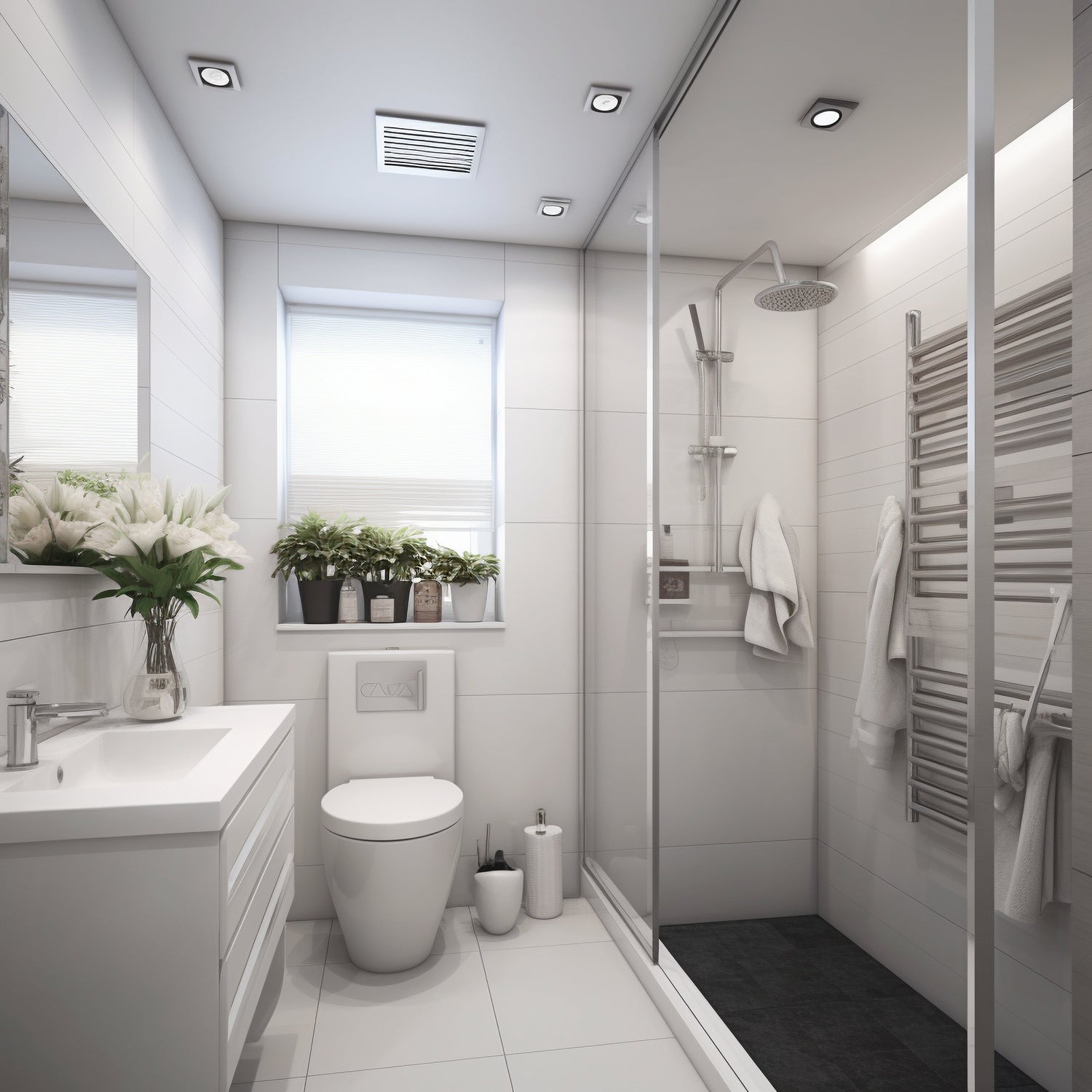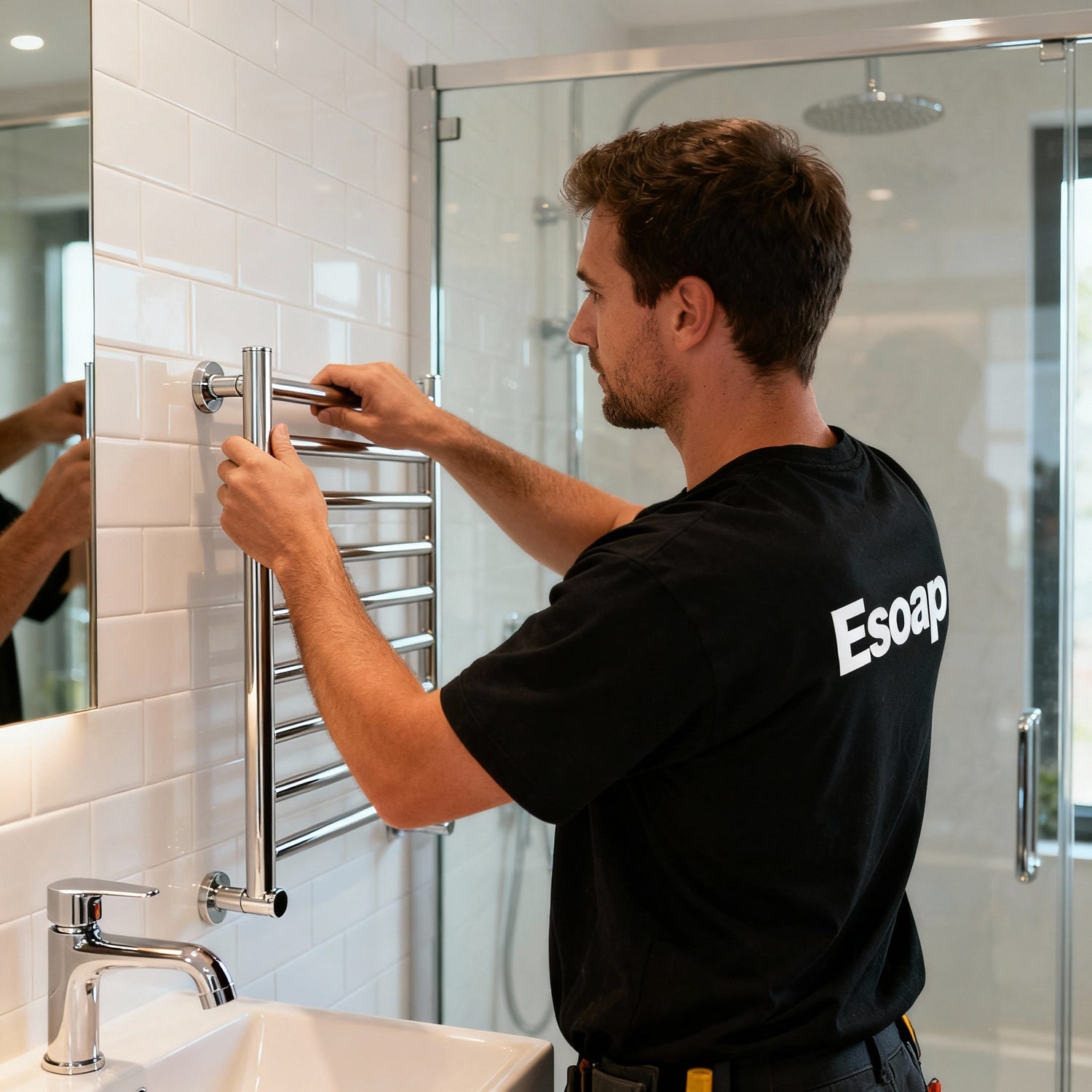Have you ever touched your towel radiators and found that some parts are warm while other parts stay cold? This can be confusing and sometimes annoying, especially in the winter. The good news is that it does not mean your radiator is broken. Most of the time, it just needs a little job called bleeding.
Bleeding a towel rail radiator means letting out trapped air from inside it. When air gets stuck, hot water cannot move around the radiator properly. Because of this, the radiator does not heat fully. By bleeding, we let the air escape, and then hot water can fill the space. This makes the radiator warm again, and your bathroom stays nice and cosy.
In this blog, we will learn everything about bleeding a towel rail radiator. We will go step by step, talk in simple words, and make it very easy to understand. Even if you have never done this before, after reading this guide, you will feel ready to do it yourself.
Curved towel rails, flat towel rails, and black towel rails are all stylish and practical choices for any bathroom. Curved towel rails give extra space for towels, letting them dry faster while adding a soft, modern touch. Flat towel rails are sleek and space-saving, perfect for smaller bathrooms where every inch counts. Black towel rails bring bold, contemporary style while still keeping your towels warm and cosy. Together, these options combine smart design, comfort, and lasting quality to keep bathrooms looking modern and feeling warm.
So, let us begin this simple but very important journey together.
What Is A Towel Rail Radiator?
A towel rail radiator is a special type of radiator that you often see in bathrooms. It looks like a rail or ladder, and you can hang your towels on it. It has two jobs:
-
To heat the bathroom.
-
To keep your towels warm and dry.
These radiators work by letting hot water flow through the pipes inside them. The hot water comes from your central heating system or sometimes from electricity if it is an electric towel rail.
When the hot water flows, the radiator becomes warm, and so do your towels. But if air is trapped inside, the water cannot move smoothly. That is why we bleed it.
Why Do You Need To Bleed A Towel Rail Radiator?
Here are the main reasons why bleeding is important:
-
Cold spots: The top of the radiator feels cold, but the bottom is hot.
-
Uneven heating: The bathroom does not feel as warm as it should.
-
Noisy radiator: Sometimes you hear gurgling or bubbling sounds.
-
Better efficiency: When air is trapped, the radiator works harder and uses more energy. Bleeding saves energy.
-
Long life: Regular bleeding keeps your radiator healthy for many years.
So bleeding is not just about comfort. It is also about saving money and keeping your radiator in good condition.
When Should You Bleed A Towel Rail Radiator?
You do not need to bleed every day. But here are times when you should check:
-
At the start of winter, when you switch on your heating system.
-
When you notice cold spots on the radiator.
-
If you hear bubbling or gurgling sounds.
-
After your heating system has been drained or serviced.
Tools You Need To Bleed A Towel Rail Radiator
Before you start, you need a few simple tools. Do not worry; these are easy to find:
-
Radiator key – A small key that fits into the bleed valve.
-
Cloth or towel – To catch any water that comes out.
-
Small bowl or container – To collect drips.
-
Gloves (optional) – To keep your hands clean.
That is all! You do not need any big machines or fancy tools.
Step-By-Step Guide To Bleeding A Towel Rail Radiator
Now let us go step by step in very simple words.
Step 1: Turn Off Your Heating
Make sure the heating system is off before you start. If the radiator is very hot, it may burn your hands. Let it cool down for some time. Safety always comes first.
Step 2: Find The Bleed Valve
Look at the top side of your towel rail radiator. You will see a small square or slot. This is the bleed valve. This is where we use the radiator key.
Step 3: Place A Cloth And Bowl
Put a cloth under the valve and hold a small bowl or container there. This will catch any water drops.
Step 4: Insert The Radiator Key
Now take the radiator key and put it into the bleed valve. Hold it firmly.
Step 5: Turn The Key Slowly
Turn the key slowly anti-clockwise (to the left). Do not open it fully, just a small turn. You will hear a hissing sound. This is the air escaping.
Step 6: Wait For Water
Keep the valve open until water starts to come out. When water comes out in a steady flow, it means all the air is gone.
Step 7: Close The Valve
Now turn the key back clockwise (to the right) and close the valve tightly. Wipe away any water drops with a cloth.
Step 8: Turn On The Heating Again
Switch the heating back on. Feel the radiator. It should now be warm from top to bottom.
Congratulations! You have just bled your towel rail radiator.
What To Do After Bleeding
After bleeding, check two things:
-
Pressure of your boiler – Sometimes bleeding lowers the water pressure in the heating system. Look at your boiler gauge. If the pressure is low, you may need to top it up.
-
Check for leaks – Make sure the valve is closed properly and there is no dripping.
Common Mistakes To Avoid
-
Do not open the valve too much. Only a small turn is enough.
-
Do not bleed when the radiator is very hot. Wait until it cools.
-
Do not forget to close the valve properly.
-
Do not panic if a little water comes out. That is normal.
How Often Should You Bleed A Towel Rail Radiator?
Most people bleed once or twice a year, usually before winter. But if you notice cold spots or noises, you can do it any time.
Safety Tips
-
Always let the radiator cool before bleeding.
-
Keep a towel or cloth ready for drips.
-
Use gloves if you want extra protection.
-
Do not leave the valve open for too long.
FAQs About Bleeding Towel Rail Radiators
Q1: Can I bleed a towel rail radiator without a key? Yes, some towel rails have a slot for a flat screwdriver. But if yours needs a key, you must use one.
Q2: How long does bleeding take? It usually takes only 5 to 10 minutes.
Q3: Do I need to call a plumber? Not always. Bleeding is simple, and most people can do it themselves. But if you still have problems after bleeding, then call a plumber.
Q4: What if water keeps leaking after bleeding? Check if the valve is closed tightly. If it still leaks, you may need a new valve.
Q5: Why is my radiator still cold after bleeding? It could be another problem, like sludge inside the radiator or an issue with the boiler. In that case, you may need a plumber.
Benefits Of Bleeding Your Towel Rail Radiator
-
Your bathroom stays warm.
-
Towels dry faster.
-
Saves money on energy bills.
-
The radiator lasts longer.
-
No more annoying noises.
What Happens If You Never Bleed?
If you never bleed your radiator, air will keep building up. This means your bathroom will stay cold, and your boiler will work harder. Over time, this can even damage your heating system. So bleeding is very important.
Bleeding Electric Towel Rail Radiators
If you have an electric towel rail, the process is a little different. Some electric radiators are sealed and do not need bleeding. Always check the manual. If your electric towel rail has a bleed valve, you can follow the same steps. But remember to switch off the electricity before starting.
Talking Example
Imagine your radiator is like a bottle of soda. When you shake the bottle, air bubbles get stuck inside. If you want only the liquid, you need to let the air out. Radiators are the same. Bleeding is like opening the cap and letting the bubbles out.
Extra Tips For A Warm Bathroom
-
Keep your radiator clean from dust.
-
Check the pressure in your heating system once in a while.
-
Bleed all your radiators in the house, not just the towel rail.
-
Use a timer to heat your bathroom before showers.
Conclusion
Bleeding a towel rail radiator may sound like a big job, but it is actually very simple. All you need is a key, a cloth, and a few minutes of your time. By doing this, you make sure your bathroom stays warm, your towels stay dry, and your heating system runs smoothly.
So the next time your radiator feels cold at the top or makes strange noises, do not worry. Just remember this guide, and you will be ready to fix it yourself.





